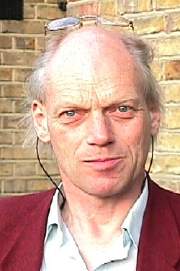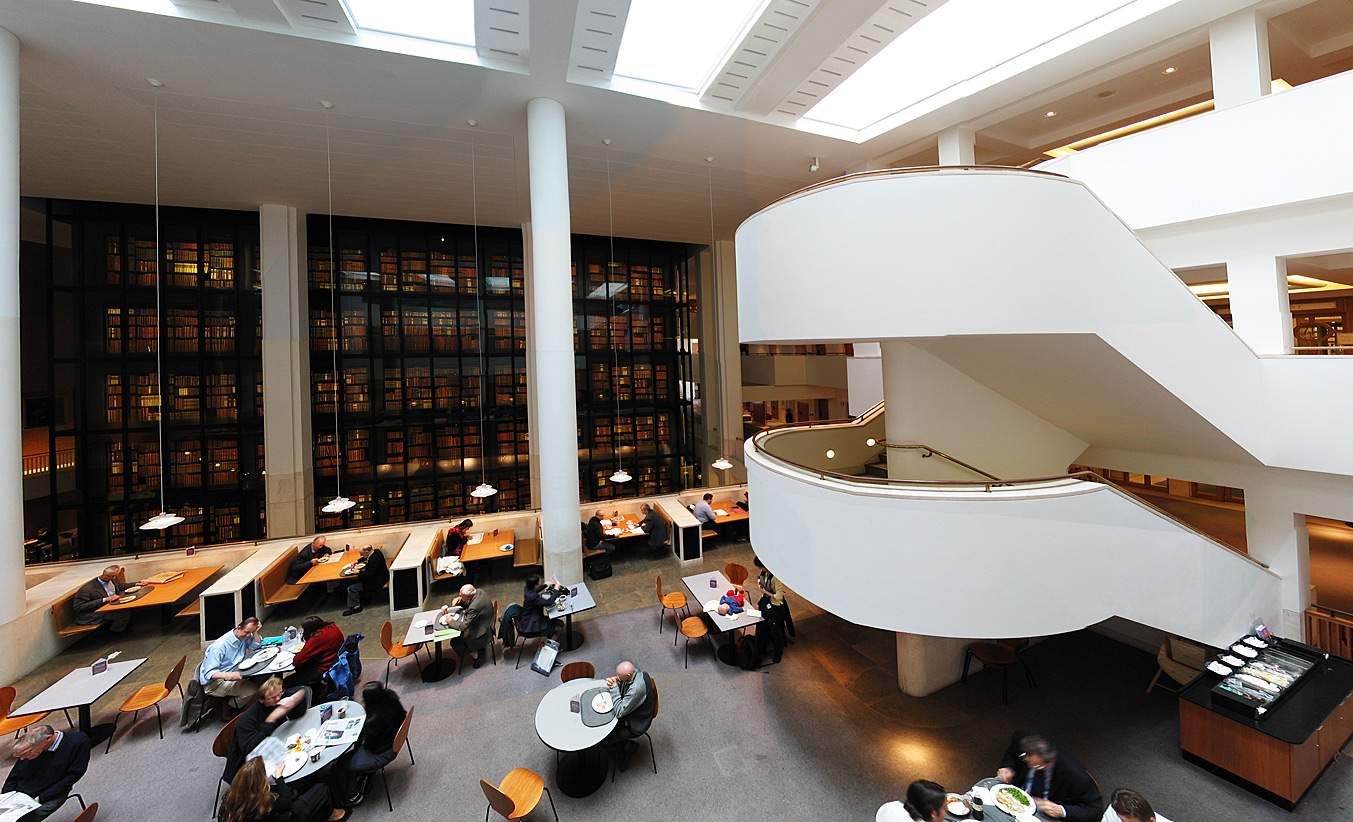|
Peter Copeland
__NOTOC__ Peter Michael Copeland (17 July 1942 – 30 July 2006) was an English sound archivist. From an early age he had a deep interest in collecting old gramophone records and in sound recording. In 1961 he joined the BBC World Service as a Technical Operator in the Control Room at Bush House, undertaking recording operations on disk and tape as well as Control Room routing. In 1964 he became a Studio Manager – operating studio mixing desks and playback equipment – at Broadcasting House, moving on to the BBC Regional studios at Bristol in 1966 where he eventually became the principal Film Dubbing Mixer, responsible for, among many other things, the final mix on David Attenborough's wildlife series '' Life on Earth''. During this time he also ran a small disc-cutting business as a sideline under the name Gosport Sound Products (he grew up in Gosport, Hampshire) – initially in his flat at Anerley, South London, and then in a small office in Bristol – doing long-pl ... [...More Info...] [...Related Items...] OR: [Wikipedia] [Google] [Baidu] |
National Sound Archive
The British Library Sound Archive, formerly the British Institute of Recorded Sound; also known as the National Sound Archive (NSA), in London, England is among the largest collections of recorded sound in the world, including music, spoken word and ambient recordings. It holds more than six million recordings, including over a million discs and 200,000 tapes. These include commercial record releases (chiefly from the UK), radio broadcasts (many from the BBC Sound Archive), and privately made recordings. Due to the 2023 cyberattack on the British Library, the sound archive's catalogue is currently unavailable. History The history of the Sound Archive can be traced back to 1905, when it was first suggested that the British Museum should have a collection of audio recordings of poets and statesmen. The Gramophone Company started donating metal masters of audio recordings in 1906 (on the basis that records would wear out), with a number of donations being made up until 1933. ... [...More Info...] [...Related Items...] OR: [Wikipedia] [Google] [Baidu] |
2006 Deaths
This is a list of lists of deaths of notable people, organized by year. New deaths articles are added to their respective month (e.g., Deaths in ) and then linked below. 2025 2024 2023 2022 2021 2020 2019 2018 2017 2016 2015 2014 2013 2012 2011 2010 2009 2008 2007 2006 2005 2004 2003 2002 2001 2000 1999 1998 1997 1996 1995 1994 1993 1992 1991 1990 1989 1988 1987 1986 Earlier years ''Deaths in years earlier than this can usually be found in the main articles of the years.'' See also * Lists of deaths by day * Deaths by year (category) {{DEFAULTSORT:deaths by year ... [...More Info...] [...Related Items...] OR: [Wikipedia] [Google] [Baidu] |
1942 Births
The Uppsala Conflict Data Program project estimates this to be the deadliest year in human history in terms of conflict deaths, placing the death toll at 4.62 million. However, the Correlates of War estimates that the prior year, 1941, was the deadliest such year. Death toll estimates for both 1941 and 1942 range from 2.28 to 7.71 million each. Events Below, the events of World War II have the "WWII" prefix. January * January 1 – WWII: The Declaration by United Nations is signed by China, the United Kingdom, the United States, the Soviet Union, and 22 other nations, in which they agree "not to make any separate peace with the Axis powers". * January 5 – WWII: Two prisoners, British officer Airey Neave and Dutch officer Anthony Luteyn, escape from Colditz Castle in Germany. After travelling for three days, they reach the Swiss border. * January 7 – WWII: ** Battle of Slim River: Japanese forces of the 5th Division (Imperial Japanese Army), 5th Division, sup ... [...More Info...] [...Related Items...] OR: [Wikipedia] [Google] [Baidu] |
Jeffery Boswall
Jeffery Boswall (20 March 1931 – 15 August 2012) was a British naturalist, broadcaster and educator. One of the longest serving producers with the BBC Natural History Unit (1957-1987), and the writer and presenter/narrator of many of the programmes he produced, he was also prominent in the development of the ethics of natural history broadcasting and the encouragement of new entrants into the field. Boswall wrote and produced the first wildlife film shown in colour on the BBC, '' The Private Life of the Kingfisher'', filmed by Ron Eastman. It was broadcast in 1967 on BBC2. He was one of the "pioneers of British natural history broadcasting" (Daily Telegraph obituary, 5 September 2012). Early years Jeffery Hugh Richard Boswall was born in Brighton on 20 March 1931. A keen amateur ornithologist, his first published article appeared in the journal British Birds when he was 16. His interest in ornithology arose from a chance suggestion by a friend that he join him bi ... [...More Info...] [...Related Items...] OR: [Wikipedia] [Google] [Baidu] |
78 RPM
A phonograph record (also known as a gramophone record, especially in British English) or a vinyl record (for later varieties only) is an analog sound storage medium in the form of a flat disc with an inscribed, modulated spiral groove. The groove usually starts near the outside edge and ends near the center of the disc. The stored sound information is made audible by playing the record on a phonograph (or "gramophone", "turntable", or "record player"). Records have been produced in different formats with playing times ranging from a few minutes to around 30 minutes per side. For about half a century, the discs were commonly made from shellac and these records typically ran at a rotational speed of 78 rpm, giving it the nickname "78s" ("seventy-eights"). After the 1940s, "vinyl" records made from polyvinyl chloride (PVC) became standard replacing the old 78s and remain so to this day; they have since been produced in various sizes and speeds, most commonly 7-inch discs pla ... [...More Info...] [...Related Items...] OR: [Wikipedia] [Google] [Baidu] |
PCM Adaptor
A PCM adaptor is a device that encodes digital audio as video for recording on a videocassette recorder. The adapter also has the ability to decode a video signal back to digital audio for playback. This digital audio system was used for Mastering (audio), mastering early compact discs. Operation High-quality pulse-code modulation (PCM) audio requires a significantly larger Bandwidth (signal processing), bandwidth than a regular analog audio signal. For example, a 16-bit PCM signal requires an analog bandwidth of about 1-1.5 MHz compared to about 15-20 kHz of analog bandwidth required for an analog audio signal. A standard analog audio recorder cannot meet this requirement. One solution arrived at in the early 1980s was to use a videotape recorder, which is capable of recording signals with higher bandwidths. A means of converting digital audio into a video format was necessary. Such an audio recording system includes two devices: the PCM adaptor, which converts aud ... [...More Info...] [...Related Items...] OR: [Wikipedia] [Google] [Baidu] |
Betamax
Betamax (also known as Beta, and stylized as the Greek letter Beta, β in its logo) is a discontinued consumer analog Videotape, video cassette recording format developed by Sony. It was one of the main competitors in the videotape format war against its primary rival, VHS. Betamax was introduced in Japan on May 10, 1975, and launched in the United States later that year. Betamax was widely regarded, in part due to Sony's marketing, as offering superior picture quality compared to VHS. Its initial β1 speed provided 250 horizontal lines of resolution, compared to VHS's 240 lines, but early Beta tapes were limited to 60 minutes of recording time, making them impractical for recording movies or sporting events. To address this, Sony introduced the β2 speed, which doubled recording time to two hours but reduced resolution, negating its technical advantage. VHS's commercial success over Betamax was also driven by JVC's strategy of licensing the format broadly, spurring competition ... [...More Info...] [...Related Items...] OR: [Wikipedia] [Google] [Baidu] |
British Library
The British Library is the national library of the United Kingdom. Based in London, it is one of the largest libraries in the world, with an estimated collection of between 170 and 200 million items from multiple countries. As a legal deposit library, it receives copies of all books produced in the United Kingdom and Ireland, as well as a significant proportion of overseas titles distributed in the United Kingdom. The library operates as a non-departmental public body sponsored by the Department for Culture, Media and Sport. The British Library is a major research library, with items in many languages and in many formats, both print and digital: books, manuscripts, journals, newspapers, magazines, sound and music recordings, videos, play-scripts, patents, databases, maps, stamps, prints, drawings. The Library's collections include around 14 million books, along with substantial holdings of manuscripts and items dating as far back as 2000 BC. The library maintains a programme for ... [...More Info...] [...Related Items...] OR: [Wikipedia] [Google] [Baidu] |
BBC Sound Archive
The BBC Sound Archive is a collection of audio recordings maintained by the BBC and founded in 1936. Its recordings date back to the late 19th century and include many rare items, including contemporary speeches by public and political figures, folk music, British dialects and sound effects. Foundation and early years The BBC began broadcasting in 1922 but nothing was recorded until ten years later. At that time, only one recording machine, a Blattnerphone, was available, so few programmes were recorded. By 1936 a number of gramophone recordings had been made, and a temporary secretary, Marie Slocombe was given the task of sorting and disposing of them. However, noticing that some included speeches by George Bernard Shaw, H. G. Wells, Winston Churchill and others, she decided that they should be kept. With the then Head of Recorded Programmes, Lynton Fletcher, she continued maintaining the BBC's collection, as well as making recordings herself in the field, encouraging others to d ... [...More Info...] [...Related Items...] OR: [Wikipedia] [Google] [Baidu] |
BBC World Service
The BBC World Service is a British Public broadcasting, public service broadcaster owned and operated by the BBC. It is the world's largest external broadcaster in terms of reception area, language selection and audience reach. It broadcasts radio news, speech and discussions in more than 40 languages to many parts of the world on Analogue signal, analogue and Shortwave listening, digital shortwave platforms, internet streaming, podcasting, Satellite radio, satellite, Digital Audio Broadcasting, DAB, FM broadcasting, FM, Longwave, LW and Medium wave, MW relays. In 2024, the World Service reached an average of 450 million people a week (via TV, radio and online). BBC World Service English maintains eight regional feeds with several programme variations, covering, respectively, East Africa, East and Southern Africa; West Africa, West and Central Africa; Europe and Middle East; the Americas and Caribbean; East Asia; South Asia; Australasia; and the United Kingdom. There a ... [...More Info...] [...Related Items...] OR: [Wikipedia] [Google] [Baidu] |
BBC Natural History Unit
The BBC Studios Natural History Unit (NHU) is a department of BBC Studios that produces television, radio and online content with a natural history or wildlife theme. It is best known for its highly regarded nature documentaries, including '' The Blue Planet'' and ''Planet Earth'', and has a long association with David Attenborough's authored documentaries, starting with 1979's '' Life on Earth''. The Natural History Unit is a specialist department within BBC Studios Productions. Each year it produces around 100 hours of television and 50 hours of radio programmes, making it the largest wildlife documentary production house in the world. The BBC commissions programmes from the Unit for broadcast on five terrestrial television channels (BBC One, BBC Two, BBC Four, CBBC and CBeebies) and BBC Radio 4. It also makes programmes for other broadcasters and services including Apple TV+, Warner Bros. Discovery, National Geographic Global Networks and NBC Universal. Content is marketed i ... [...More Info...] [...Related Items...] OR: [Wikipedia] [Google] [Baidu] |






